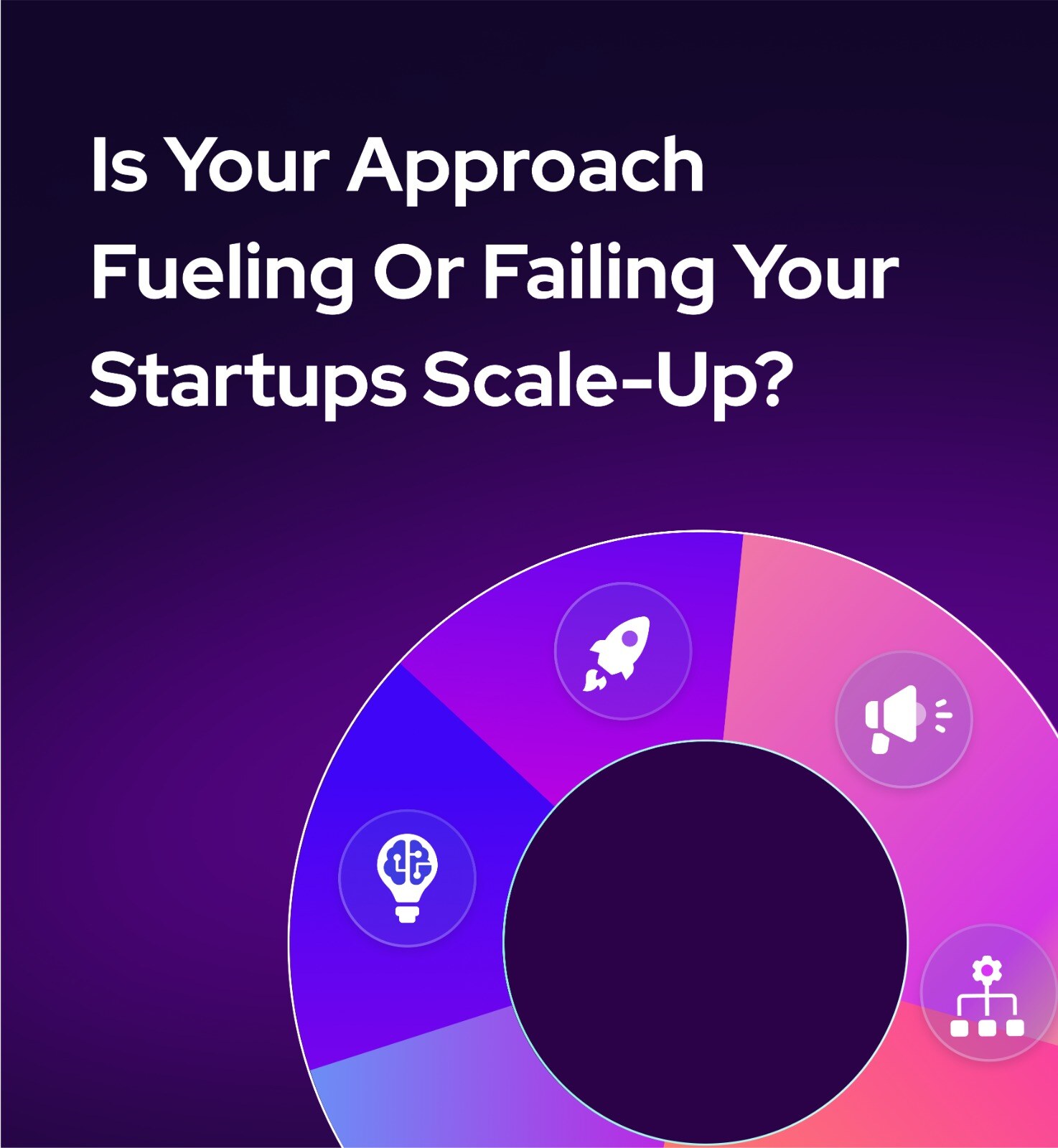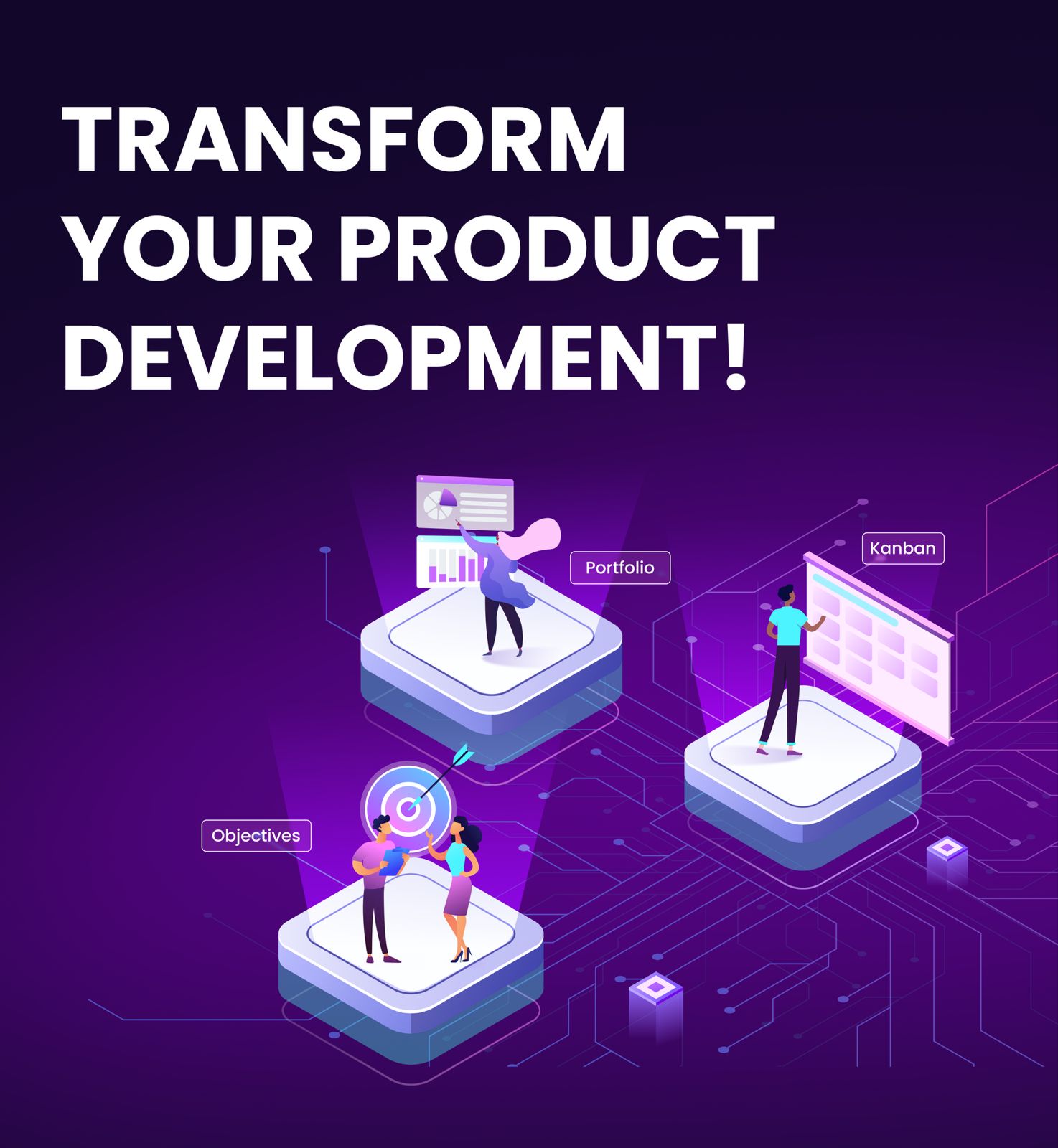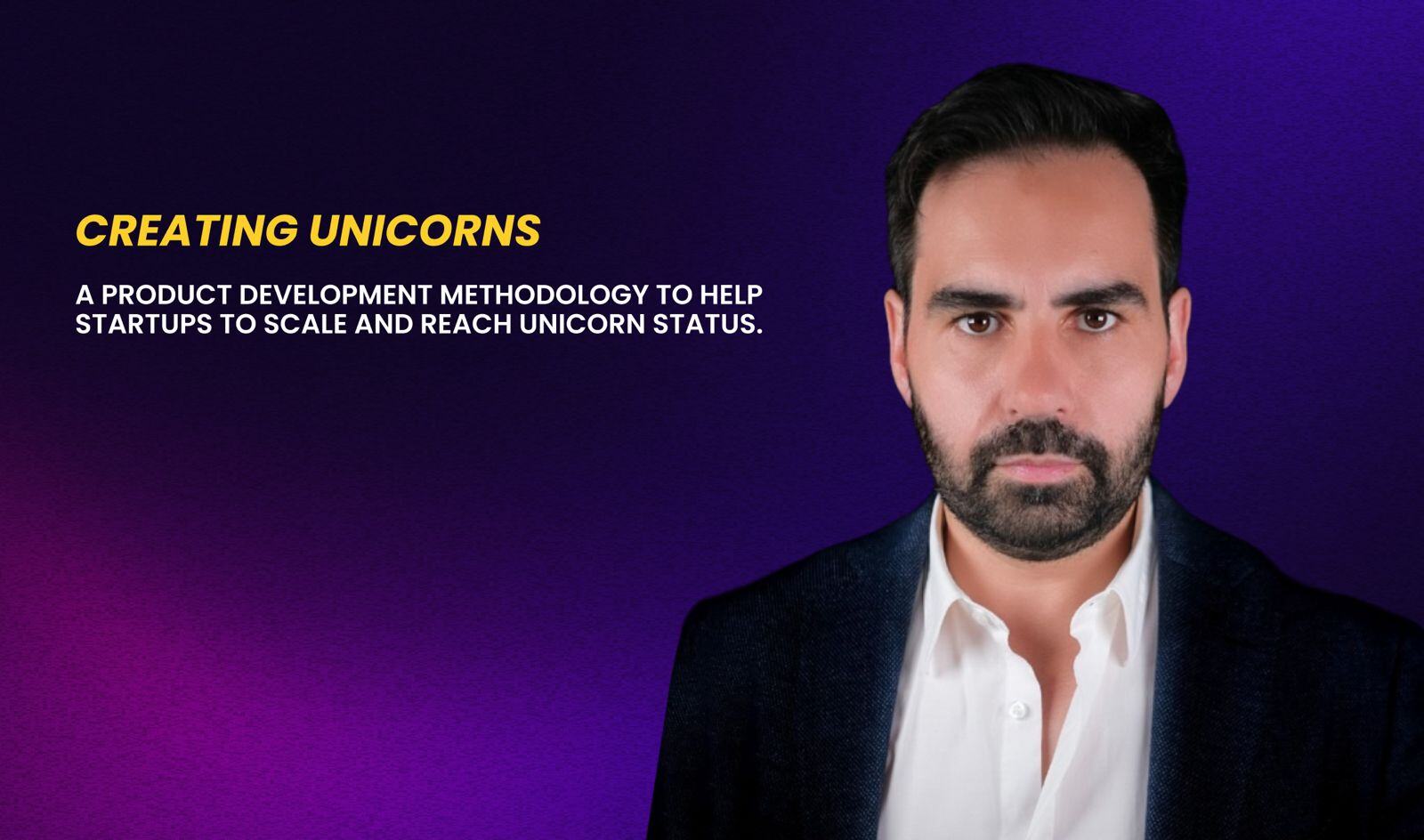Product Governance Framework: Scaling Digital Product Startups
In the rapidly evolving digital landscape, startups must prioritize the reliability, security, and regulatory compliance of their products. This is where implementing a Digital Product Governance Framework becomes crucial. This article will delve into the significance of such a framework in managing digital products throughout their lifecycle, aligning with organizational and regulatory standards.
We'll discuss its core components, benefits, and the practical application of the Organisational Mastery Blueprint for effective implementation.
A Product Governance Framework is vital in the dynamic environment of product development, providing structured guidance from product inception to retirement. It includes principles, processes, and guidelines that ensure products meet their objectives and the broader goals of the organization. This framework is key to informed decision-making, risk management, and compliance, enhancing product value for the business and its customers.
Adopting a robust Product Governance Framework allows startups to achieve consistency, transparency, and accountability in product development, leading to products that deliver maximum benefits while minimizing risks and challenges.
The Essential Role of a Product Governance Framework
In the current volatile business environment, startups face intense challenges in product development. Rapid technological advancements and changing consumer preferences create a narrow window for product relevance. Startups often race to innovate before their ideas become outdated, juggling cross-functional teams with varying priorities and methodologies.
This situation demands a balance between speedy development and quality assurance, with frequent strategic pivots to adapt to market changes. Such a dynamic, competitive landscape makes product development complex and sometimes overwhelming.
Lacking a structured Product Governance Framework can lead to significant setbacks. Without it, there's a higher risk of developing products misaligned with company goals, leading to wasted resources and strategic errors. Teams might invest in projects that don't support the startup's core objectives, using up valuable time and funds.
Additionally, the absence of a governance framework can mean insufficient quality checks and market fit analysis, increasing the likelihood of product failures after launch. These failures are not just financially costly but can also harm the startup's reputation and weaken customer trust.
Advantages of a Product Governance Framework
For startups, implementing a robust Product Governance Framework offers several significant benefits, enhancing both the product development process and overall business performance. First, it ensures alignment between product initiatives and the startup's strategic goals. This coherence means that each product or feature developed is in sync with the company's mission and vision, leading to more unified and purpose-driven product lines.
Additionally, a well-established governance structure introduces a systematic approach to resource management. It directs resources - time, manpower, or capital - toward projects that align with business objectives, preventing wasteful spending and maximizing return on investment. This efficient resource allocation also speeds up decision-making, as there is a clear framework to assess the feasibility and potential impact of product initiatives.
Lastly, product governance acts as a protective mechanism against potential product failures. With predefined guidelines and checkpoints, products undergo thorough quality checks and market fit analysis before reaching consumers. This not only improves product quality but also cultivates market trust and credibility. In summary, product governance is fundamental to a successful product development strategy for startups, ensuring consistency, efficiency, and value delivery throughout the product lifecycle.
Overcoming Challenges in Implementing a Product Governance Framework
Implementing a Product Governance Framework in startups, while beneficial, comes with its own set of challenges. A primary obstacle is organizational resistance to change. Established companies, particularly those with entrenched systems and processes, may find adapting to a new governance framework difficult. Employees used to certain workflows might see these changes as disruptive, leading to reluctance or even pushback.
Another significant challenge is balancing governance with agility. Governance should provide structure and direction without becoming so restrictive that it stifles innovation or slows down the product development process. Finding this balance, where governance supports rather than impedes rapid and innovative product development, is a complex endeavor.
Moreover, as startups grow and diversify, ensuring the consistent application of governance across various product lines, departments, or locations becomes challenging. Differences in understanding, interpreting, or implementing the governance framework can lead to inconsistencies in product development, potentially undermining the benefits of governance.
Thus, while the advantages of product governance are clear, its successful implementation demands careful planning, continuous monitoring, and an ongoing commitment to refinement and adaptation.
Organisational Mastery as a Product Governance Framework
Organisational Mastery, conceived by Luis Gonçalves, presents a comprehensive blueprint for executive leaders to craft product-led companies with high Enterprise Agility. It focuses on integrating strategic vision into everyday operations, ensuring that product development aligns with overall business goals.
A key principle of Organisational Mastery is translating strategy into daily operations, ensuring all product decisions, from concept to delivery, align with the company's broader objectives. This approach establishes a clear governance structure, preventing misaligned product initiatives and optimizing resource use.
Additionally, Organisational Mastery emphasizes reducing time to market. In product governance, this means processes and guidelines that support quick, efficient, and effective product development cycles. This approach ensures timely product delivery and development in response to current market needs, enhancing relevance and impact.
Continuous improvement and innovation, integral to Organisational Mastery, aligns with the governance principle of iterative enhancement. It encourages a culture of ongoing product improvement based on feedback and market changes. This approach ensures products remain competitive and relevant.
Knowledge sharing, a core element of Organisational Mastery, is vital for product governance. It creates an environment where knowledge, best practices, and innovations are shared, elevating product quality and ensuring consistency across lines.
Finally, Organisational Mastery emphasizes a culture of innovation. In product governance, this means ensuring products evolve with market demands and technological advancements. Without structured innovation, companies risk becoming stagnant.
Integrating Strategy into Digital Product Governance
For startups, successfully managing business operations hinges on the ability to translate the overarching company strategy into actionable daily operations. This process can be envisioned as a hierarchical flow, where each level contributes to the next, ensuring alignment and purpose at every stage.
At the hierarchy's top is the Company Strategy, which outlines the broad objectives and vision of the organization. This strategy is fundamental, directing the formulation of Objectives and Key Results (OKRs). OKRs are specific, measurable outcomes that connect strategic intent with operational execution, aligning every team and individual with the company’s broader goals.
From these OKRs, the Product Roadmap is created, filled with Epics. Epics are high-level descriptions of desired functionalities or features that match the OKRs, ensuring the product's direction aligns with the company's strategic objectives. These Epics are then broken down into more detailed tasks and items that contribute to the Product Backlog.
The Product Backlog is a dynamic list of tasks, features, and enhancements prioritized for development. It acts as the immediate reference for teams, confirming that daily operations, from design and development to testing, align with the strategic vision established at the hierarchy's outset.
This structured approach ensures a smooth transition from high-level strategy to practical execution, ensuring alignment, efficiency, and purpose in every aspect of product development.
.png?width=618&height=437&name=layers-of-prioritization%20(1).png)
Accelerating Time to Market in Digital Product Governance
In today's rapid business environment, "Reducing Time To Market" is crucial for startups to gain a competitive edge through speed and agility. A key strategy involves organizing the organization around value streams. A value stream is a complete process that delivers specific value to the customer, from the initial idea to the final product delivery.
Organizing the company in this way ensures that every team and individual focuses on activities that directly contribute to delivering value, eliminating inefficient processes, and boosting efficiency.
Lean Budgeting is vital in this framework. Traditional budgeting methods, with their rigid annual budgets and inflexible financial plans, can impede the agility necessary to reduce time to market. Lean Budgeting, however, offers a more adaptive approach. Instead of allocating funds based on detailed project plans, budgets are tied to product OKRs (Objectives and Key Results), ensuring that financial resources align directly with strategic objectives. This alignment allows for quicker reallocation and reprioritization based on changing market conditions or new opportunities.
By funding product OKRs through Lean Budgeting, organizations can ensure efficient use of financial resources to achieve strategic goals. This approach not only streamlines the product development process but also ensures that products are developed and launched in response to actual market needs and opportunities.
In summary, by structuring around value streams and implementing Lean Budgeting, startups can significantly decrease their time to market, maintaining agility, responsiveness, and competitiveness in a constantly changing marketplace.

Continuous Improvement in Digital Product Governance
In the digital product governance framework, "Continuous Improvement" is pivotal, highlighting the necessity for organizations to consistently refine processes, methodologies, and strategies.
A key element in this realm is the introduction of an Organisational Impediment Board. This board acts as a centralized repository for all organizational challenges, bottlenecks, and issues that may impede optimal performance. By transparently and accessibly compiling these impediments, the board ensures awareness of these challenges across all levels of the organization, from top executives to frontline employees. This widespread awareness cultivates a problem-solving culture, encouraging everyone to contribute solutions and ideas.
Furthermore, the board aids in prioritization. With a comprehensive view of all impediments, decision-makers can more effectively identify which issues, when resolved, would have the most significant impact or relieve the most critical pain points.
The cyclical nature of the Organisational Impediment Board is where its true effectiveness lies. As challenges are identified, prioritized, and addressed, new issues emerge, keeping the board in a state of continuous update. This ongoing cycle ensures that the organization remains agile, always prepared to tackle problems and adapt to new circumstances.
By institutionalizing the practice of identifying and resolving challenges through the Organisational Impediment Board, startups can integrate continuous improvement into their organizational fabric. This ensures sustained growth, adaptability, and resilience in a constantly evolving business landscape.
.png?width=618&height=437&name=Organisational-Impediment-Board%20(1).png)
Knowledge Sharing in Digital Product Governance
"Sharing Knowledge" is a crucial component of the Digital Product Governance Framework, highlighting the significant impact of collective wisdom on organizational success. Central to this concept is the formation of Communities of Practice (CoP). These are collaborative groups centered around specific areas of expertise or interest, where members share knowledge, discuss challenges, and collectively enhance their understanding.
In the framework of Organisational Mastery, Communities of Practice are critical for disseminating knowledge and improving skills. As product development and organizational strategies evolve, these communities prevent knowledge from being confined within specific teams or departments. Instead, they ensure a free flow of insights, best practices, and innovative solutions across the organization, cultivating a culture of continuous learning.
Additionally, these communities serve as catalysts for innovation. By uniting diverse perspectives and expertise, they provide a rich environment for brainstorming, problem-solving, and idea exchange. This collaborative atmosphere not only hastens challenge resolution but also ignites new ideas that can propel the organization forward.
In summary, Communities of Practice are more than mere platforms for sharing knowledge. They are dynamic ecosystems that nurture expertise, encourage collaboration, and drive continuous improvement. This ensures that startups remain agile, well-informed, and ahead in a rapidly evolving business environment.
.png?width=618&height=437&name=COPs%20(1).png)
Embedding Innovation in Digital Product Governance
Innovation forms a crucial and final pillar of Organisational Mastery, highlighting the necessity for businesses to constantly evolve and adapt in today’s fast-paced market. This pillar focuses on making incremental innovation a consistent, structured, and essential part of the organizational process, rather than relying on sporadic bursts of creativity.
A key strategy to achieve this is the implementation of Google Design Sprints at the end of each quarter. These week-long, intensive brainstorming and prototyping sessions are aimed at tackling specific challenges or exploring new opportunities. By allocating focused time and resources, these sprints yield a wealth of insights in a condensed period.
The effectiveness of this approach lies in its promptness; the insights and ideas from these sprints can be quickly converted into OKRs (Objectives and Key Results) and integrated into the product roadmap. This ensures the organization promptly acts on innovative ideas in the following quarter.
Additionally, the innovation pillar effectively integrates with the product discovery phase. Ideas and hypotheses from discovery are validated and refined during design sprints, creating a synergy that ensures product development is not only intuitive but also backed by validated insights and user feedback.
Ultimately, the innovation pillar of Organisational Mastery advocates a proactive approach to innovation. By institutionalizing processes like design sprints and aligning them with product discovery and roadmap planning, innovation becomes a continuous, deliberate, and strategic activity. This structured approach keeps the organization at the forefront of market trends and ensures agility, responsiveness, and continuous evolution in a dynamic business landscape.
.png?width=618&height=437&name=Delivery-Discovery%20(1).png)
Integrating the Pillars: The Complete View of Organisational Mastery's Product Governance Framework
Organisational Mastery offers a holistic Product Governance Framework that is essential for achieving organizational excellence. This framework comprises five key pillars: translating strategy into daily operations, reducing time to market, continuous improvement, sharing knowledge, and fostering innovation. Each pillar plays a critical role and is interlinked to create a comprehensive approach to product governance.
-
Translating Strategy into Daily Operations: This pillar ensures that the company's overarching strategy is effectively broken down into actionable steps and integrated into everyday workflows, aligning every action with the company's goals. The methodology uses the OKR framework to achieve this goal.
-
Reducing Time to Market: By structuring around value streams and adopting Lean Budgeting, this aspect focuses on accelerating product development processes to quickly respond to market needs and opportunities.
-
Continuous Improvement: This involves a commitment to consistently refining processes and methodologies, using tools like the Organisational Impediment Board to identify and address challenges proactively.
-
Sharing Knowledge: Through Communities of Practice, this pillar encourages the flow of information and expertise across the organization, fostering a culture of continuous learning and collaborative innovation.
-
Fostering Innovation: By institutionalizing innovation through practices like Google Design Sprints, this pillar ensures that creativity and new ideas are continuously integrated into product development.
These pillars, when combined, provide a robust framework for startups to manage their product development process efficiently. They ensure that the organization remains agile, focused, and aligned with its strategic objectives while adapting to market changes and fostering a culture of innovation and continuous improvement. This integrated approach is what makes Organisational Mastery a powerful tool for achieving organizational excellence in the dynamic world of digital product governance.

Organisational Mastery employs a structured and cyclical approach to ensure product excellence, with activities flowing seamlessly from one stage to the next. The process starts annually with the formulation of the Product Strategy, where the product's goals for the year are established. These annual goals then guide the quarterly Objectives and Key Results (OKRs), aligning them with the broader vision.
These OKRs subsequently shape the Product Roadmap, which then informs the Product Backlog for the upcoming quarter. Teams operate in bi-weekly cycles to maintain agility and responsiveness in product development. In parallel, the Organisational Impediment Board, also functioning in two-week cycles, identifies and addresses organizational challenges, fostering continuous improvement.
Concurrently with product delivery, product discovery is an ongoing process. Every quarter, insights from product discovery are brought together in a Google Design Sprint. These sprints ensure that innovative ideas are not only validated but also effectively integrated into the product delivery process. Additionally, Communities of Practice meet bi-weekly, promoting knowledge sharing and collaborative problem-solving.
This structured, cyclical approach ensures a steady flow of innovation, alignment with strategic objectives, and continuous improvement in the product development process, encapsulating the essence of Organisational Mastery in driving product excellence.
-1.png?width=618&height=319&name=TimeLine-OM%20(1)-1.png)
Conclusion
In today’s digital age, effective digital product governance is indispensable for organizations aiming to maintain their competitive edge and safeguard their reputation. The implementation of a robust governance framework is key to enhancing various aspects of business operations. It significantly improves decision-making processes, bolsters collaboration across teams, minimizes risks, and ensures adherence to industry regulations and standards.
For successful implementation, organizations must first thoroughly assess their current operational structure. This assessment helps in identifying areas that require restructuring or enhancement to support a comprehensive governance framework. Following this, the development of a tailored governance framework that aligns with the organization's unique needs and objectives is crucial. This framework should encompass key aspects such as strategy translation, time-to-market optimization, continuous improvement, knowledge sharing, and innovation.
However, the establishment of a governance framework is not a one-time task. It requires ongoing monitoring and refinement to adapt to the ever-evolving digital landscape and the organization's changing needs. Regular reviews and updates ensure that the framework remains relevant, effective, and aligned with the latest industry trends and compliance requirements.
In conclusion, digital product governance is not just a strategic imperative but a continuous journey towards operational excellence. It positions businesses to respond effectively to market changes, innovate continuously, and achieve long-term success in the dynamic and challenging digital marketplace.
Disclaimer
This blog post was initially generated using Inno Venture AI, an advanced artificial intelligence engine designed to support digital product development processes. Our internal team has subsequently reviewed and refined the content to ensure accuracy, relevance, and alignment with our company's expertise.
Inno Venture AI is a cutting-edge AI solution that enhances various aspects of the product development lifecycle, including intelligent assistance, predictive analytics, process optimization, and strategic planning support. It is specifically tailored to work with key methodologies such as ADAPT Methodology® and Scaleup Methodology, making it a valuable tool for startups and established companies alike.
Inno Venture AI is currently in development and will soon be available to the public. It will offer features such as intelligent product dashboards, AI-enhanced road mapping, smart task prioritization, and automated reporting and insights. If you're interested in being among the first to access this powerful AI engine, you can register your interest at https://innoventure.ai/.

Take The Test

Sign Up
You May Also Like
These Related Stories

Product Organization Blueprint: Structuring for Scaling Startups

The Seven Product Strategy Mistakes Scaling Startups Must Avoid


